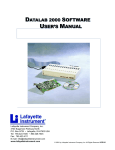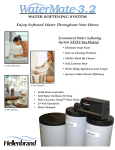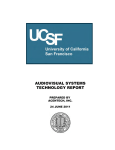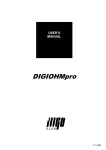Download Moravian Instruments G3-1000 Specifications
Transcript
DataLab PC Industrial PC-compatible computer (models DataLab PC 1200, DataLab PC 1000, DataLab PC 800, DataLab PC 610, DataLab PC 600) All information furnished by Moravian Instruments is believed to be accurate. Moravian Instruments reserves the right to change any information contained herein without notice. DataLab devices are not authorized for and should not be used within Life Support Systems without the specific written consent of the Moravian Instruments. Product warranty is limited to replacement of defective components and does not cover injury or property or other consequential damages. This document may be copied when keeping to the following conditions: • The whole text must be copied without modifications and must contain all pages. • All notifications of this kind must be mentioned in the documentation. Copyright © 2004–2006, Moravian Instruments Moravian Instruments Masarykova 1148 763 02 Zlín Czech Republic tel./fax: 577 107 171 internet: www.mii.cz mail: [email protected] Contents Introduction . . . . . . . . . . . . . . . . . . . . . . . . . . . . . . . . . 5 Technical specifications . . . . . . . . . . . . . . . . . . . . . . . . . . . 7 DataLab PC configurations . . . . . . . . . . . . . . . . . . . . . . . . . . 9 DataLab PC 1200 9 DataLab PC 1000 10 DataLab PC 800 11 DataLab PC 610 12 DataLab PC 600 13 Differences among DataLab PC configurations 14 Optional components 14 RAM memory 14 HDD and CF card 14 Operating system 15 Windows XP Embedded (XPe) 15 Writing data to CF card in Windows XP Embedded 16 Connector placement . . . . . . . . . . . . . . . . . . . . . . . . . . . . 17 ATX panel 17 Power supply and auxiliary circuits 17 Power supply connector and main switch 18 Auxiliary 12 V DC power output 18 Indication LEDs 18 Reset 18 Communication lines RS-485 RS-485 settings Jumper settings Watchdog . . . . . . . . . . . . . . . . . . . . . . . . . . . . . . . . . . 21 Jumper settings Mounting . . . . . . . . . . . . . . . . . . . . . . . . . . . . 19 19 19 19 . . . . . . . . . . . . . . . . . . . . . . . . . . . . . . . 22 . . . . . . . . . . . . . . . . . . . . . . . . . . . . . . . . . . 23 Maintenance . . . . . . . . . . . . . . . . . . . . . . . . . . . . . . . . 24 CMOS RAM backup battery 24 4 Introduction DataLab PC is a new line of compact computers fully compatible with PC standard, but designed to work in industrial applications, laboratories and schools. They employ lowpower VIA EDEN processors, which enable working without active (fan assisted) cooling of CPU and chipset. This ensures durability and reliable operation required in industrial applications. On the other side the compatibility with the PC standard (VIA EDEN processors are fully compatible with x86 architecture) relatively high performance, rich set of interfaces, communication capabilities and low price bring numerous advantages. • Full compatibility with PC standard allows running of numerous operating systems • • • • • (Windows 2000, Windows XP, Linux), including systems designed for embedded applications (Windows CE, Windows XP Embedded, Embedded Linux). Small, compact and robust case protects the computer against mechanical damage and allows easy manipulation. DataLab PC can be easily mounted on standard DIN rail. Low power consumptions of CPUs (CPU and chipset heat sinks are passive, without fans) ensures long durability without maintenance. High performance and large memory (it is possible to plug 64 MB up to 512 MB or 1 GB memory module to standard DIMM slot) enables running of big and demanding application. Users can choose between standard 2.5" IDE hard drive or Compact Flash (CF) memory card (it is necessary to use embedded OS like Windows XPe to use CF card instead of HDD). Ability to work without hard drive adds to the overall reliability of the whole computer. There are DataLab PC variants with standard 230 V/50 Hz AC power supply as well as DC power supplies. 5 • Presence of all standard PC interfaces (RS-232C, LPT, Ethernet, USB 1.1 and 2.0, VGA, PS/2 keyboard and mouse, Audio) on the standard ATX panel makes DataLab PC as flexible as standard desktop PCs. • The DataLab PC incorporates hardware USB-based watchdog. The watchdog driver in the forms of Windows DLL, Active X component and Control Web driver is supplied with every computer. • DataLab PC computers are ideally suited to run Control Web process control software. 6 Technical specifications Power supplies power line 230 V/50 Hz AC 11–20 V DC supply 200 W ATX 18–28 V DC 80 W ATX-DC 120 W ATX-DC Maximum AC power consumption 0.2 A at 230 V Motherboard Mini-iTX standard Auxiliary DC output power supply 12 V / 500 mA DC, common ground Mounting Wall mounting on standard 32 mm DIN-rail table-top case 76,5 Weight max. 3.5 kg 186 278 DataLab PC Figure 1 DataLab PC case dimensions 7 USB RS-232C Figure 2 +12 V DC VGA RS-485 KBD I O AUDIO Compact Flash Card LPT ETH MOUSE Front panels Remark 1 Front panel connector placement can differ according to DataLab PC type. 8 DataLab PC configurations DataLab PC is offered in several models differing in CPU speed, memory types and available ports. Other features are available for all models and are configurable according to customer’s needs. DataLab PC 1200 • CPU VIA Eden 1.2 GHz (x86 compatible) • 512 MB DDR2, 533 MHz SDRAM 1, shared video memory • 230 V AC or 18–28 V DC and 11–20 V DC power supplies available, +12 V DC output available for powering of peripherals • typical power consumption (without HDD) 15 W • watchdog • interfaces: — — — — — — — — — 1 2 3 analog VGA output PS/2 (mini DIN) keyboard and mouse 1× RS-232C (COM1) 1× RS-485 2 1× Gigabit Ethernet 4× USB 2.0 audio In/Out Compact Flash Type 1 memory card slot optional 40 GB Hard Disk Drive 3 One DIMM slot is available, memory size can be from 64 MB to 1 GB RS-485 module is optional component and must be ordered separately any 2,5" disk with ATA or SATA interface can be used 9 DataLab PC 1000 • CPU VIA C7 1 GHz (x86 compatible) • 512 MB DDR2, 533 MHz SDRAM 4, shared video memory • 230 V AC or 18–28 V DC and 11–20 V DC power supplies available, +12 V DC output available for powering of peripherals • typical power consumption (without HDD) 15 W • watchdog • interfaces: — — — — — — — — 4 5 analog VGA output PS/2 (mini DIN) keyboard and mouse 1× RS-232C (COM1) 1× 10/100 Mbps Ethernet 4× USB 2.0 audio In/Out Compact Flash Type 1 memory card slot optional 40 GB Hard Disk Drive 5 One DIMM slot is available, memory size can be from 64 MB to 1 GB any 2,5" disk with ATA or SATA interface can be used 10 DataLab PC 800 • CPU VIA Eden 800 MHz (x86 compatible) • 256 MB DDR400 SDRAM 6, shared video memory • 230 V AC or 18–28 V DC and 11–20 V DC power supplies available, +12 V DC output available for powering of peripherals • typical power consumption (without HDD) 19 W • watchdog • interfaces: — — — — — — — — — 6 7 8 analog VGA output PS/2 (mini DIN) keyboard and mouse 1× RS-232C (COM1) 1× RS-485 7 1× 10/100 Mbps Ethernet 2× USB 2.0 audio In/Out Compact Flash Type 1 memory card slot optional 40 GB Hard Disk Drive 8 One DIMM slot is available, memory size can be from 64 MB to 1 GB RS-485 module is optional component and must be ordered separately any 2,5" disk with ATA or SATA interface can be used 11 DataLab PC 610 • CPU VIA Eden 600 MHz (x86 compatible) • 256 MB DDR266 SDRAM 9, shared video memory • 230 V AC or 18–28 V DC and 11–20 V DC power supplies available, +12 V DC output available for powering of peripherals • typical power consumption (without HDD) 15 W • watchdog • interfaces: — — — — — — — — — — 9 10 11 analog VGA output PS/2 (mini DIN) keyboard and mouse 1× RS-232C (COM1) 1× RS-485 10 2× 10/100 Mbps Ethernet 4× USB 2.0 1× Parallel port (LPT) audio In/Out Compact Flash Type 1 memory card slot optional 40 GB Hard Disk Drive 11 One DIMM slot is available, memory size can be from 64 MB to 1 GB RS-485 module is optional component and must be ordered separately any 2,5" disk with ATA interface can be used 12 DataLab PC 600 • CPU VIA Eden 600 MHz (x86 compatible) • 256 MB DDR266 SDRAM 12, shared video memory • 230 V AC or 18–28 V DC and 11–20 V DC power supplies available, +12 V DC output available for powering of peripherals • typical power consumption (without HDD) 15 W • watchdog • interfaces: — — — — — — — — — — — 12 13 14 analog VGA output PS/2 (mini DIN) keyboard and mouse 1× RS-232C (COM1) 1× RS-485 13 1× 10/100 Mbps Ethernet 2× USB 2.0 1× Parallel port (LPT) audio In/Out video Out Compact Flash Type 1 memory card slot optional 40 GB Hard Disk Drive 14 One DIMM slot is available, memory size can be from 64 MB to 1 GB RS-485 module is optional component and must be ordered separately any 2,5" disk with ATA interface can be used 13 Differences among DataLab PC configurations The following table summarizes differences among various DataLab PC configurations. interface Ethernet USB 2.0 RS-485 CPU memory SDRAM DataLab PC 1200 1×1 Gbps 4× optional 1,2 GHz DDR2, 533 MHz DataLab PC 1000 1×10/100 Mbps 4× no 1 GHz DDR2, 533 MHz DataLab PC 800 1×10/100 Mbps 2× optional 800 MHz DDR, 400 MHz DataLab PC 610 2×10/100 Mbps 4× optional 600 MHz DDR, 266 MHz DataLab PC 600 1×10/100 Mbps 2× optional 600 MHz DDR, 266 MHz Optional components RAM memory Standard DIMM memory modules are used. Memory capacity can be chosen according to the current memory modules availability. HDD and CF card Standard 2.5" IDE HDD is optional. The DataLab PC contains one slot for Type 1 CF card. CF card are connected directly to IDE bus so it must work in “True IDE” mode. It is possible to use CF card with or without HDD. The embedded operating system can boot from CF (Windows XP Embedded or Windows CE). The Windows XP Embedded operating system protects CF card against writes with socalled “write filter”. So it can be useful to combine CF card with another IDE Flash disk connected to another (internal) IDE port. IDE Flash disk can be used e.g. to store Control Web archive files etc. Data are written directly to IDE Flash disk as opposite to CF card, where all writes are accumulated in RAM buffers and these buffers are physically committed to CF card upon executing of explicit command (see chapter Operating system). CF card works as IDE master on secondary IDE channel by default. Master or slave mode can be selected by jumper J1 on the CF slot printed circuit board. This board is accessible after removing the computer cover. Warning 1 It is possible to manipulate with CF card only when DataLab PC is turned off! 14 Operating system DataLab PC works with all operating systems compatible with standard PC architecture. User can choose whatever operating system he/she wants to use: • • • • Windows CE.NET 15 Windows XP Embedded 15 Windows 2000 16 Windows XP Professional 16 Windows XP Embedded (XPe) Windows NT family of operating systems (including Windows 2000 and Windows XP) are traditionally linked with the PC architecture. Many properties of Windows NT represent no problem for desktop PCs or servers (or, on the contrary, may be advantageous), but practically disable implementation of embedded applications—Windows NT needs a hard disk for the paging file, the installation is quite wide, users have restricted possibilities to influence the configuration of the system, etc. However, for example, the hard disk is not accessible in many solutions due to its sensitivity to mechanical shocks and restricted time of non-stop operation. Despite this fact there are series of embedded applications for which the further properties of Windows are very welcome—in particular, very rich support of the most varied hardware, availability of development tools and a large number of ready programs, etc. If there is some peripheral to be connected to a PC on the market today, the chance that it will be accompanied by the driver for Windows 2000/XP is really very high. Of course, it also concerns equipment for industrial automation when producers supply supporting libraries for communication with its hardware, OPC servers and other software, mainly for Windows 2000/XP. Another welcome property of Windows 2000/XP is robustness. Although in no case is it a real-time operating system, for permanent running of applications and processing of a large volume of data this system is very suitable. The first attempt at modification of Windows NT for use in embedded solutions was the creation of the Windows NT Workstation 4.0 Embedded. The basis of the modifications was mainly isolation of individual modules of the system core so as to be able to work relatively independently. The distribution included a development tool which enabled OEM partners to configure the system—i.e. to include modules, which are necessary for the respective application and to omit components, which were useless. In this manner it was possible to create images of Windows NT, e.g., without a graphic user interface, without the support of network communication, etc. A very important property was the ability to work without hard disk, i.e. only from, e.g,. CompactFlash cards. Remark 2 Memory media based on FLASH memories have a great disadvantage compared with hard disks—the number of recording cycles is restricted according to the type of memory to 100,000 to 1,000,000. But there are a series of recordings on the disk during the work of the operating system and applications—auxiliary files are created and deleted, events are recorded into log files, etc. Mainly, there are frequent writes into the page file). The attempt to install the standard Windows NT on FLASH disk may result in success, but the life time of such an installation can be only several weeks or months. Then FLASH will start to fail and the system will stop functioning. 15 16 Requires Compact Flash card. Requires hard drive. 15 For systems used for implementation into embedded solutions (Windows CE) there is no such problem, systems do not write on the disk during work and if they need to write something, it is possible to create a virtual disk in RAM. Systems adapted for work in embedded applications (Windows NT/XP Embedded) are equipped with a so-called write filter, which is a component able to catch attempts to write to the hard disk and to prevent damaging the FLASH memory. Ability to work without the page file is part of the modifications of the system. Although Windows NT Workstation 4.0 Embedded can be used in embedded solutions, it was introduced on to the market just before the introduction of Windows 2000 on PC and servers. Work on Windows 2000 Embedded started, but it was not introduced on to the market. The final introduction was the version Windows XP Embedded (also called Windows XPe). Windows XPe (like Windows CE) is not sold as a product for end users. Only original equipment manufacturers (OEM) may purchase development tools and create installation Windows XPe for their equipment. There is a wide database of device drivers (graphic adapters, network cards, printers, . . .) available. At the same time, there is available a write filter for installation of the system on FLASH disks or for creation of a bootable image of the system on CD-ROM (of course, Windows XPe may work from a standard hard disk or boot the system from the network). Writing data to CF card in Windows XP Embedded When the Windows XPe operating system is installed on CF card, all writes to CF card are stored to RAM buffer instead of directly to the CF card to protect the CF card from “wearing off” (number of writes is limited to approx. 1 million). RAM buffers are physically transferred to the CF card upon execution of the ewfmgr command. DataLab PC with Windows XPe pre-installed are supplied with a shortcut on the desktop, which executes command ewfmgr c : -commit. All data stored in RAM buffers are passed to the file system to be written to the CF. However, keep in mind that the actual write is performed during correct system shutdown or reboot. Simply switching the computer off discards all writes. It is necessary to keep this on mind when designing the embedded application and when choosing the software platform and used utilities etc. Frequent stores should be performed e.g. on remote disk storage. Another possibility is to use separate IDE Flash disk or HDD for storing files. The CF card can be used for occasional writes (configuration data etc.) without problems, just every change must be explicitly committed. DataLab PC equipped with CF card can be switched off anytime without the risk of corrupting the operating system or application files. 16 Connector placement There is a standard ATX connector panel on one side of the DataLab PC. The power supply connectors and main switch, as well as CF slot, 12 V DC auxiliary output and possible RS485 interface connector are placed on the opposite side. ATX panel Connector placement on ATX panel depends on individual configuration. Panel picture is shown in individual configuration descriptions. Thorough description can be found in respective motherboard documentation, supplied with every computer. Power supply and auxiliary circuits Compact Flash Card RS-485 I O Main switch L1 L2 230 V AC +12 V DC Auxiliary power supply Figure 3 Power supply connectors USB watchdog, auxiliary power supply, indication LEDs and RS-485 interface are placed on the separate PWD printed circuit board. This board is accessible after removing the computer cover. Figure 4 PWR printed circuit board 17 Power supply connector and main switch Depending on the power supply, the DataLab PC has either standard 230 V AC power plug or two-pole connector for DC power supply. Both power supply variants have main switch. Auxiliary 12 V DC power output Two-pole connector with 12 V DC auxiliary power output is available on the side of the DataLab PC computer. Maximal output current is 500 mA. Warning 2 Take care to use proper polarity of the auxiliary power output. Indication LEDs There are two two-colors LED on the side of the DataLab PC computer: • LED 1 indicates RS-485 communication line state. • LED 2 indicates the DataLab PC powered state and also indicates auxiliary power output overload. LED 1 states: green light RS-485 transmits red light RS-485 receives LED 2 states: no light main power off green light power on red light 800 mA maximal output current of 12 V DC exceeded Reset There is no reset button on DataLab PC. It is possible to reboot it either by software (choose Windows Shutdown/Reset) or by switching the computer off and then on again. Warning 3 When the DataLab PC was switched off, wait a couple of seconds before switching on again. 18 Communication lines Every DataLab PC is equipped with standard RS-232C serial line, USB ports and Ethernet interface. DataLab PC 800 and DataLab PC 600 contain 2 USB ports, DataLab PC 1200, DataLab PC 1000 and DataLab PC 610 offers 4 USB ports on ATX panel. DataLab PC 1200, DataLab PC 800, DataLab PC 610 and DataLab PC 600 can be also equipped with isolated RS-485 serial interface. RS-485 module is optional and must be ordered separately. The RS-485 is connected to internal serial interface so the RS-232C interface on the ATX panel remain free for other usage. RS-485 The RS-485 serial line uses three-pole connector. Communication line is isolated. Twocolors LED 1 indicates communication: green light—transmission, red light—receiving. 12 V DC L1 L2 + RS-485 A B GND Figure 5 Auxiliary 12 V DC output and RS-485 connectors RS-485 settings The printed circuit board is accessible after removing the computer cover. RS-485 interface module is plugged (piggybacked) to PWR board, which contains connectors. Jumper settings • J1—controls direction control. Direction can be controlled according to RTS signal or automatically depending on the transmitter activity. Automatic direction control requires setting of time delays according to the communication speed by the RT resistor. Automatic direction control (default) RTS-controlled direction • RT—defines time delay of automatic direction control. The 68 kΩ resistor is used by default. The RT value can be calculated from the equation τ [ms] = 7 × RT [MΩ], where τ is a time constant. For instance for the speed 19,200 Bd with 1 start bit, 8 data bits, 1 stop bit and 1 parity bit time constant is: 11 bits / 19,200 bps = 0.573 ms; which corresponds to RT = 81 kΩ. • RA, RB, RC—terminating resistors. 360 Ω resistors are used by default. 19 Remark 3 If there is an RS-485 module marked GPA used, then the direction is controlled automatically and neither J1 jumper nor RT resistor have any meaning. 20 Watchdog The DataLab PC computers are equipped with hardware watchdog, which helps to increase reliability in demanding applications. If the control program hangs (be it due to critical error, infinite loop etc.), watchdog resets the computer and restores the initial state. It is necessary to activate the watchdog first. Then it checks for periodical signaling from running application. If the application fails for some reason, watchdog resets the computer. The period can be set with the step 0.1 s up to approx. 6,500 s. Application deactivates the watchdog again upon its termination. 21 Jumper settings Watchdog can be configured by J5 and J6 jumpers on the PWR printed circuit board. Both jumpers are behind the RS-485 module. watchdog inactive (default) watchdog active 22 Mounting DataLab PC can be mounted on the standard 32 mm DIN-rail or can be placed anywhere on the suitable flat space. Mounting the computer to the DIN-rail is simple: first insert the bottom side of the DIN clip to place the DataLab PC on the DIN-rail. Then push the case upwards until the upper side of the DIN clip hangs to the rail. Removing the computer from the DIN-rail is very similar: again push the DataLab PC case upwards until the upper side of the DIN clip releases from the DIN-rail to remove the computer. If the DataLab PC should be placed on appropriate place, flexible pads are placed on the back of the case instead of DIN clips. Take care to wire the power lines correctly respective to polarity. Also ensure all cabling and connectors are well placed and properly fixed. 23 Maintenance DataLab PC requires no regular maintenance. CMOS RAM backup battery BIOS configuration data as well as date and time is stored in the CMOS RAM powered by battery on motherboard. This battery lasts at last 5 years, then it is necessary to replace it. 24


































